Écriture
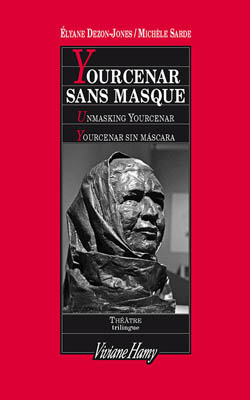
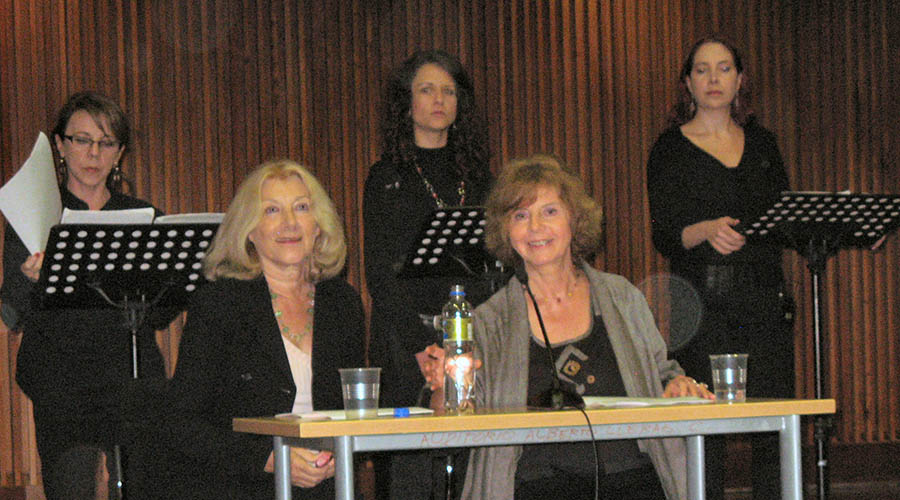
Presentación Présentation
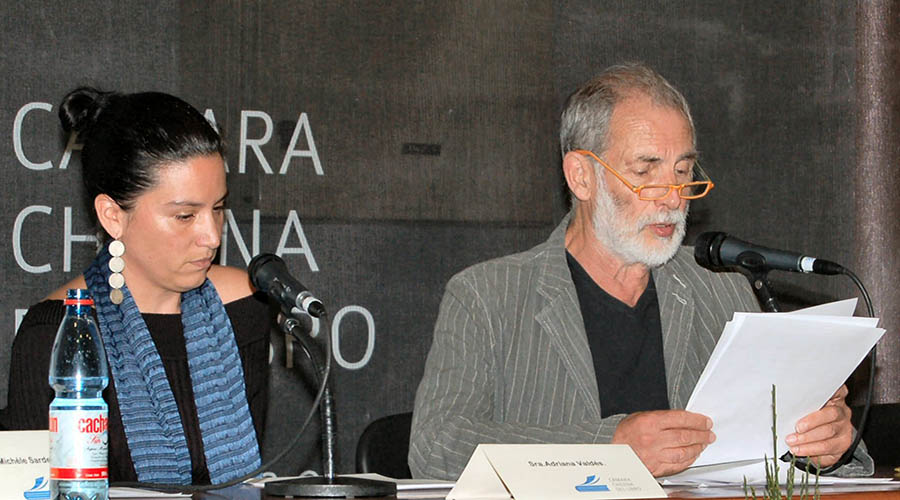
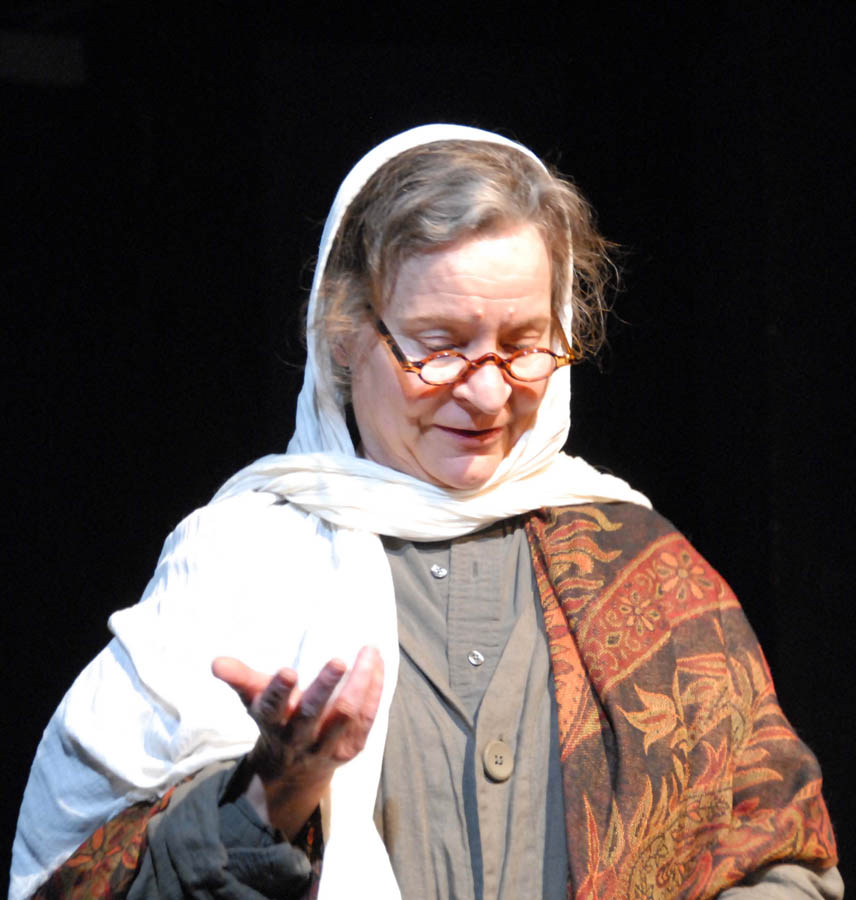
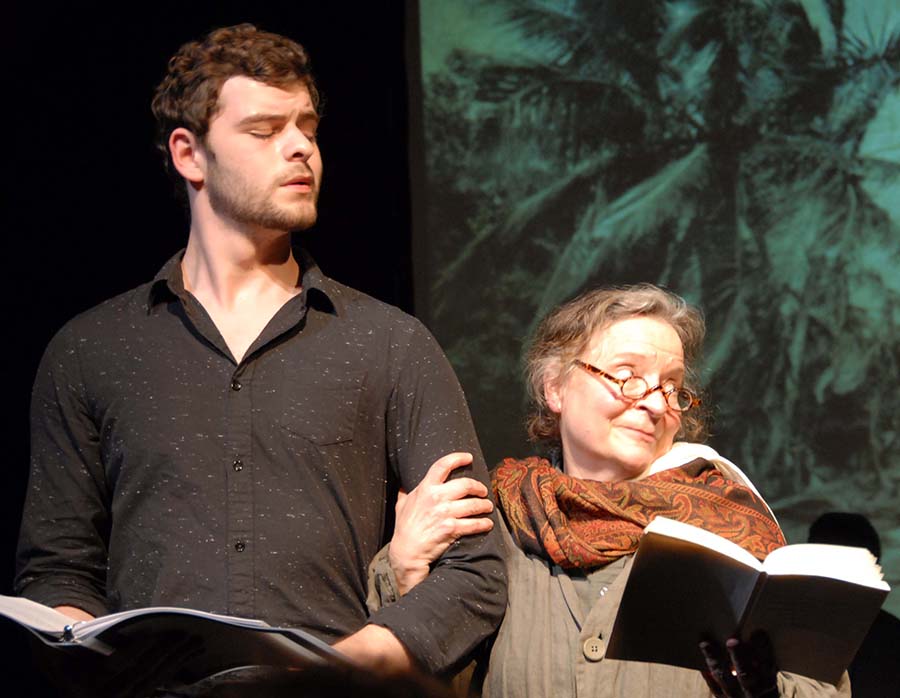
Yourcenar sans masque
Élyane Dezon-Jones et Michèle Sarde, romancières et éditrices de la correspondance
de Marguerite Yourcenar, esquissent, avec Yourcenar sans masque, une
séquence d’« autoportraits », entre vie privée et image publique, de la première
Académicienne. Une subtile variation sur le thème de l’érotisme à un certain âge,
fondant l’œuvre dans la biographie et la biographie dans l’œuvre de la grande
écrivaine.
Quatrième de couverture
Yourcenar en voix
Mettre Yourcenar en scène ? Mettre Yourcenar sur scène ?
C’est après un festival d’Avignon que nous avons eu l’idée de composer une pièce de théâtre mettant en scène l’écart entre « le monument Yourcenar », la première Académicienne dans toute sa gloire, d’un côté, et de l’autre la femme, à l’œuvre dans son quotidien, avec ses faiblesses, ses colères et ses passions.
Pourquoi ne pas tenter une autre aventure, innover ?
Faire entendre la voix de Yourcenar à un moment clé de son existence, début 1980,
juste après la mort de sa
compagne Grace, juste avant son élection à l’Académie française. Elle attend un appel
du jeune Jerry W. pour
partir en croisière avec lui dans les Caraïbes. Ce sera le premier acte d’une
descente dans des souffrances
dont l’écho se retrouve, noir sur blanc, dans Quoi ? L’Éternité.
Faire entendre des voix. Celle de la narratrice dans le dernier volume de
Le Labyrinthe du monde,
entrecroisée avec celles d’Alexis, d’Hadrien, de Zénon, de Nathanaël et de
tous ses personnages. Ils formeront
une sorte de chœur sur lequel l’auteure exerce sa maîtrise.
Ainsi sommes-nous entrées dans les chantiers de l’écriture. À l’aide de « pierres authentiques », c'est-à-dire de fragments de la parole de Yourcenar disséminée dans ses écrits – correspondance, entretiens, essais, fiction – nous avons souhaité reconstituer le monument à notre manière. Nous avons fait ce pari, d’évoquer le plus exactement possible les relations troubles et tourmentées que l’auteur entretient avec ses personnages à la frontière entre la singularité d’une vie et l’infini d’une œuvre.
Yourcenar elle-même s’était beaucoup intéressée au théâtre et pensait que ce n’était pas pour elle « une occupation secondaire ». Éclectique, elle a proposé des ré-écritures originales de textes antiques et emprunté aussi bien aux techniques du Nô japonais pour son Dialogue dans le marécage qu’à la commedia dell arte pour Rendre à César. Mais dans tous les cas, ce qu’elle souhaitait faire c’est, comme elle l’écrivait à propos d’ Alceste, « une pièce la plus désencombrée possible ».
La nôtre représente une Yourcenar sans fard, à mi-chemin « entre la magie et
l’érudition » et met en scène
l’alchimie par laquelle le vécu d’une personne, dans sa part la plus intime et
la plus obscure, se métamorphose
dans le langage universel de l’œuvre d’art. Nous avons imaginé certaines scènes mais
toujours à partir de la
transposition que Yourcenar elle-même a effectué d’événements réels dans ses œuvres.
Sa voix est la pierre
angulaire de notre construction, inspirée d’une phrase de Borges qui la hantait et qui nous a
portées : « Un écrivain croit parler de beaucoup de choses, mais ce qu’il laisse,
s’il a de la chance, c’est une image de lui »
Élyane Dezon-Jones et Michèle Sarde
Introduction
Sharing revealing glimpses of the life and works of a French literary genius of the 20th
century, this work alternates between moments of glorious recognition and instants of
sorrowful intimacy. After the death of her companion Grace Frick, Marguerite Yourcenar
falls victim to the real-life seduction of Jerry, a youthful Adonis who succumbs to AIDS.
In her late seventies, she reminisces about her life and her fictional characters who
become more real to her than her own physical existence. The play touches on the deep
mystery of artistic creation.
Web site of Georgetown University’s Department of Performing Arts
Losing Grace or Unmasking Yourcenar
In Unmasking Yourcenar, Élyane Dezon-Jones and Michèle Sarde, novelists and
editors of Marguerite Yourcenar’s correspondence, present a series of “self-portraits”
oscillating between the private life and public image of the first woman to be elected
to the French Academy. A subtle variation on the theme of eroticism after a certain age,
the play weaves the works into the life and the life into the work of this great writer.”
Back cover
Daring to put Yourcenar on the stage
After attending a Summer Theater Festival in Avignon, we decided to write a play that in
some way might bridge the enormous gap between reified perceptions of Marguerite Yourcenar
and something more real and rounded. On the one hand there is the “monumental” Yourcenar
known to the world— the writer extraordinaire who received two Femina prizes and was the
first woman to be admitted into the French Academy. On the other hand there is Marguerite,
struggling with the disappointments of everyday life, her bursts of anger, her tragic flaws.
How might we dramatize the shared and the lonely; the strength and the weakness of her personality; how might we grant our audience a glimpse of this singular artist’s unshakeable commitment to her calling while we also uncover those rattling passions of Yourcenar’s that both fulfilled her and led her into dangerous territory while nourishing her work?
In the play we limit our scope to a few days in her life. In January 1980, at age 77, she faces a crisis and a turning point. Her companion, Grace Frick, has just died and Yourcenar is on the verge of making history with her election to the Académie. When the play opens she is waiting for a call from a new and much younger friend, Jerry W. Soon they are taking a Caribbean cruise together –- the first step of a journey leading to a hellish ménage à trois. Ever the artist, she will later explore this exhilarating but violent chapter of her life in the last part of her Labyrinthe du monde entitled What? Eternity.
From the very beginning, we knew we would chose to use Yourcenar’s words (and only her words) to unfold this moment in her life. Whenever she speaks in the play and whenever a character from her work speaks (be it Hadrien, Alexis, Zeno or Nathanaël), we are quoting so that we might achieve a kind of chorus orchestrated by the writer herself as Maestro. Using these “genuine stones,” we intend to recast the monumental Yourcenar and place her squarely within a non-fictional moment of her life. There we gamble on the possibility of showing the complex, troubled relationship between a writer and her characters, between an artist and the real world around her by standing in the wings of her writing days. As an over-riding goal, we are attempting to shed light on a “frontier” that is unpopulated by biographers and critics: the alchemical process by which the singularity of a life, in its most intimate and obscure part, is transformed into the universality of a work of art. With “a foot in erudition and a foot in the magic arts,” we let Yourcenar step from behind her mask – one that is inevitably imposed by time and reverence. To modify that imposition we chose to make Yourcenar’s voice heard anew on the stage.
Truly an eclectic thinker and creator, Yourcenar was very much interested in play writing
and did not consider it a “secondary occupation.” She wrote plays based on ancient themes
that she revised again and again. She borrowed from the technique of Japanese Nô or commedia
dell arte whenever it suited her artistic purpose. But mainly, as she explained in
her Alceste, she always tried “to write a play as uncluttered as possible.” Her
voice is the cornerstone of our construction, inspired by a sentence from Borges which
haunted her and emboldened us: “a writer thinks that he speaks about a lot of things but
what is left of him, with any luck, is an image of himself.”
Élyane Dezon-Jones and Michèle Sarde
Introduction
Sharing revealing glimpses of the life and works of a French literary genius of the 20th century,
this work alternates between moments of glorious recognition and instants of sorrowful intimacy. After
the death of her companion Grace Frick, Marguerite Yourcenar falls victim to the real-life seduction of
Jerry, a youthful Adonis who succumbs to AIDS. In her late seventies, she reminisces about her life and
her fictional characters who become more real to her than her own physical existence. The play touches
on the deep mystery of artistic creation.
Web site of Georgetown University’s Department of Performing Arts
Yourcenar sin máscara
Élyane Dezon-Jones y Michèle Sarde, novelistas y editoras de la correspondencia de Marguerite
Yourcenar, esbozan en Yourcenar sin máscara una secuencia de “autorretratos”, entre vida privada
e imagen pública, de la primera académica. Sutil variación del tema del erotismo a cierta edad,
fundando la obra en la biografía y la biografía en la obra de la gran escritora.
Contraportada
La voz de Yourcenar
¿Poner a Yourcenar en escena? ¿Llevar a Yourcenar al escenario?
Fue en un festival de teatro de Aviñón que tuvimos la idea de componer una obra en la que pudiéramos
mostrar la brecha entre “el monumento Yourcenar” —la autora que recibió dos premios Femina, la primera
académica en toda su gloria— por un lado, y por el otro la mujer, en su quehacer cotidiano, con sus
debilidades, sus cóleras y sus pasiones.
¿Por qué no intentar una aventura original?
Hacer oír la voz de Yourcenar en un momento clave de su existencia, a comienzos de 1980. Su compañera Grace Frick acaba de morir y la escritora está a punto de ingresar en la Academia Francesa. Espera una llamada del joven Jerry W. para partir con él en un crucero en el Caribe, primer acto de una caída en el sufrimiento, cuyo eco puede oírse nítidamente en ¿Qué? La eternidad.
Hacer oír varias voces. La de la narradora en el último volumen de El Laberinto del mundo, entrecruzada con las de Alexis, Adriano, Zenón, Natanael y todos sus personajes. Todas estas voces formarán una suerte de coro sobre el cual la escritora ejerce su control.
Así entramos en la construcción de la escritura. Hemos querido reconstruir el monumento a nuestra manera usando “piedras auténticas”, es decir, fragmentos de sus palabras, diseminadas en sus escritos —correspondencia, entrevistas, ensayos, ficción. Hemos intentado la empresa de evocar lo más exactamente posible las relaciones turbias y tormentosas que la autora mantiene con sus personajes, en la frontera entre la singularidad de una vida y el infinito de una obra.
La propia escritora se había interesado mucho en el teatro, y se oponía a la idea de que fuera para ella solo una “ocupación secundaria”. De manera ecléctica, propuso reescrituras de textos antiguos y se inspiró tanto del teatro Noh de Japón para El diálogo en el pantano como de la commedia dell’arte para Dar al César. En todo caso, lo que Marguerite Yourcenar deseaba lograr, como lo escribía ella misma en Alcestes, era “la obra más despejada posible”.
La obra nuestra representa una Yourcenar sin maquillaje, a medio camino “entre la magia y la erudición”, y pone en escena la alquimia mediante la cual lo vivido por una persona, en sus aspectos íntimos y oscuros, se transforma a través del lenguaje universal de la obra de arte.
Hemos imaginado ciertas escenas pero siempre a partir de hechos reales que la propia Yourcenar ha
transpuesto en su obra. Su voz es la piedra angular de nuestra construcción, inspirada en una frase
de Borges que la obsesionaba y que nos ha impulsado: “aunque un escritor cree hablar de muchos temas,
lo que realmente deja, si tiene suerte, es una imagen de sí mismo”.
Élyane Dezon-Jones y Michèle Sarde
Introducción
Sharing revealing glimpses of the life and works of a French literary genius of the 20th century,
this work alternates between moments of glorious recognition and instants of sorrowful intimacy.
After the death of her companion Grace Frick, Marguerite Yourcenar falls victim to the real-life
seduction of Jerry, a youthful Adonis who succumbs to AIDS. In her late seventies, she reminisces
about her life and her fictional characters who become more real to her than her own physical
existence. The play touches on the deep mystery of artistic creation.
Web site of Georgetown University’s Department of Performing Arts